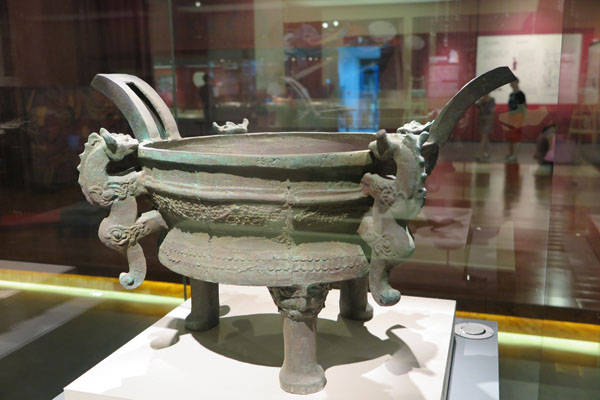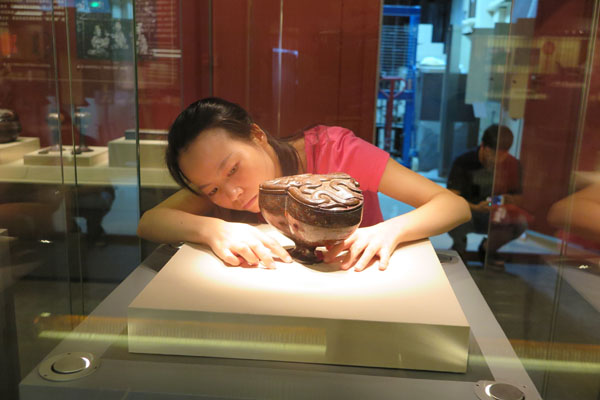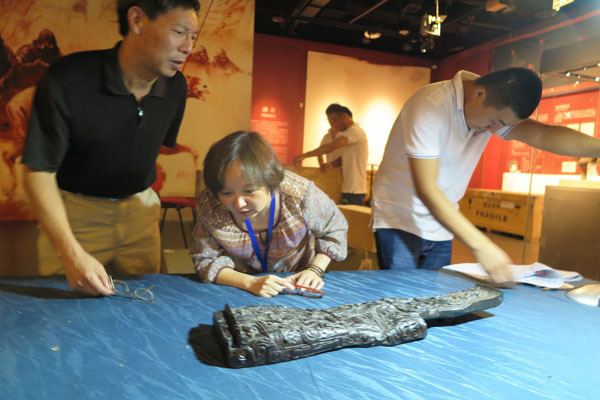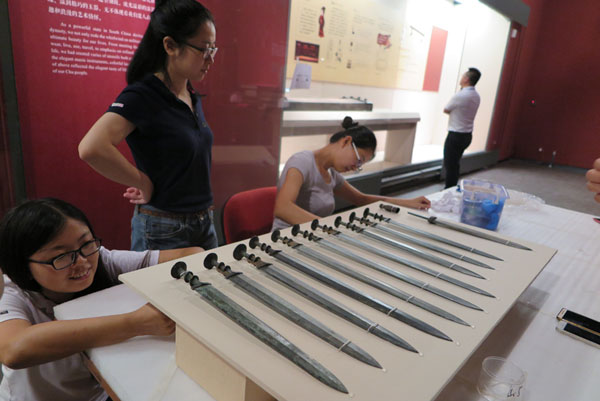
Jiuliandun Tombs relics displayed in Sichuan
|
|
|
A bronze vessel used in the sacrificial ceremony more than 2,000 years ago will open to visitors in the Jinsha Site Museum in Chengdu, Sichuan province from August 20 to October 31.(Photo by Huang Zhiling/chinadaily.com.cn) |
Visitors to the Jinsha Site Museum in Chengdu, Sichuan province, are bemused with a bronze object serving as a refrigerator more than 2,000 years ago.
Containing ice to cool wine in an inner container by a general in the Chu Kingdom whose center is in today's Hubei province, it is one of 142 cultural relics from the Jiuliandun Tombs in Hubei which will be displayed in the Jinsha Site Museum from August 20 to October 30.
|
|
|
A worker arranges a lacquer bowl which will open to visitors in the Jinsha Site Museum in Chengdu, Sichuan province from August 20 to October 31.The bowl was used in the sacrificial ceremony more than 2,000 years ago (Photo by Huang Zhiling/chinadaily.com.cn) |
To prepare for the exhibition, workers are busy arranging exhibits in the Jinsha Site Museum.
Excavated in the city of Zaoyang in Hubei in 2002, the Jiuliandun Tombs consist of a tomb of a general and his wife, said Wang Fang, an archaeologist and researcher at the Jinsha Site Museum.
|
|
|
Archaeologists examine a musical instrument made of lacquer more than 2,000 years ago in the Jinsha Site Museum in Chengdu, Sichuan province. It will open to visitors in the museum from August 20 to October 31.(Photo by Huang Zhiling/chinadaily.com.cn) |
More than 5,000 cultural relics, including bronze, lacquer and jade ware, armors and two chariot pits, have been excavated. The pits are the largest and best preserved chariot pits in China.
"Such a large number of relics excavated in the tombs of a general and his wife, instead of a king and his wife, show the prosperity of the Chu Kingdom," Ms Wang said.
|
|
|
Workers fasten bronze swords made more than 2,000 years ago on a panel. They will open to visitors in the Jinsha Site Museum in Chengdu, Sichuan province from August 20 to October 31. (Photo by Huang Zhiling/chinadaily.com.cn) |
Regarded as one of the seven most powerful states in its time, the Chu Kingdom consisted of today's Hubei, Hunan, Henan, Jiangxi, Anhui, Jiangsu and Zhejiang provinces.
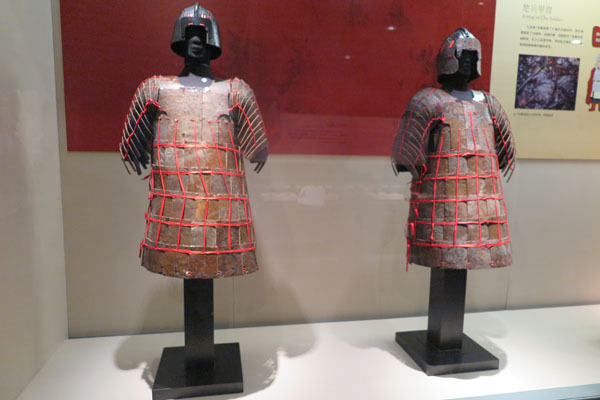 |
|
Armors more than 2,000 years old will open to visitors in the Jinsha Site Museum in Chengdu, Sichuan province from August 20 to October 31. (Photo by Huang Zhiling/chinadaily.com.cn) |





